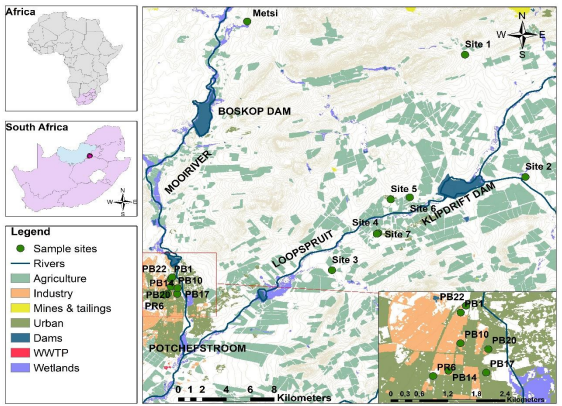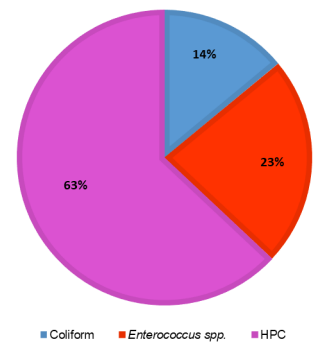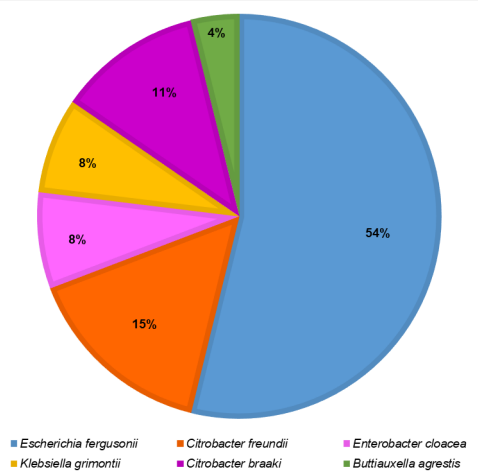Identification and characterization of bacteria isolated from selected groundwater systems in the North West Province
Nyakallo Metsing (MSc)
Supervisor: Lesego Molale-Tom
Co-supervisor: Carlos Bezudenhout
Supervisor: Lesego Molale-Tom
Co-supervisor: Carlos Bezudenhout
Abstract
Sources of water in the North West Province (NWP) include groundwater, surface water, imported water and reusable effluent. Nonetheless, despite developed infrastructure, water in the NWP is a limited resource and the effects of demand exceeding supply come at a great cost. Mining and agriculture primarily contribute to the economy of the region, however, they are among the main contributors to water quality problems that are experienced in the province. In recent times it has been speculated that groundwater systems may contain microorganisms that harbour antibioticresistance genes. Considering the various mechanisms by which bacteria can acquire and transfer these genes, the microbial quality of the groundwater is questionable. This study aimed to identify and characterize bacteria isolated from groundwater systems in the North West Province. This was accomplished by determining the physico-chemical as well as microbial quality (coliforms, Enterococcus spp. and Heterotrophic Plate Count bacteria) of the groundwater systems of interest. The Kirby-Bauer and extracellular enzyme production tests were performed to determine the antibiotic-resistance profiles of the isolated bacteria as well as their pathogenic potential. Lastly, the presence of antibiotic-resistance as well as virulence genes was determined in the bacteria isolated. Consistently high TDS levels ranging from 201-1857 ppm were observed throughout this study. Moreover, the level of coliforms increased as the temperature increased. The highest levels of coliform contamination were found in areas frequented by cattle. The high use of manure produced by cattle is one of the sources of organic nutrients for agricultural purposes. Furthermore, consistently high levels of enterococci were observed in sites S6, S1 and S5. This is alarming because the presence of enterococci indicates feacal matter in water. Consistently high HPC levels were observed throughout the duration of the study. The high concentration of HPC in water could be because of various reasons such as water temperature or the amount of organic matter. Moreover, 186 isolates were subjected to haemolysin production testing. A sum of 146 isolates were alpha haemolytic, whilst 20 were beta haemolytic and the remaining 20 were gamma haemolytic. These isolates were subjected to the Kirby-Bauer disk diffusion test. The highest antibiotic-resistance was noted for: ampicillin (30μg), ciproflaxacin (5μg), chloramphenicol (30 μg), oxy-tetracycline (30 μg) and trimethoprim (5 μg). Furthermore, coliforms and Enterococcus spp. were further tested for the presence of selected virulence genes. In the case of coliforms, all the screened genes (stx1, stx2, hylA and eaeA) were detected in one Klebsiella grimontii, one Enterobacter cloacae and two Escherichia fergusonii. Shiga toxin (stx) is among the most efficacious bacterial toxins ever discovered. The presence of shiga toxin in water could cause kidney diseases. Furthermore, in the case of Enterococcus spp., the most detected virulence determinants were hyla and cylA. Lastly, All the isolates were subjected to antibiotic-resistance gene detection, only 23 of the 186 isolates harboured antibiotic-resistance genes. The most harboured gene was amp C. Bacillus spp., were the most prominent bacteria that harboured antibiotic-resistance genes. This suggests that the screened groundwater systems harbour potential pathogenic bacteria and that the water might need to go through purification steps before being consumed by humans and animals.
Aim and Objectives
The aim of this study was to identify and characterize bacteria isolated from selected groundwater systems of the North West Province.
The objectives of the study were to:
The aim of this study was to identify and characterize bacteria isolated from selected groundwater systems of the North West Province.
The objectives of the study were to:
- Isolate and identify coliforms, Enterococcus spp., and heterotrophic plate count bacteria from selected groundwater systems;
- Determine the ability of the isolated microorganisms to produce extracellular enzymes;
- Determine the antibiotic profiles of the isolated microorganisms;
- Determine whether the isolated microorganisms harbour antibiotic-resistance and virulence genes.
Benefit to interdisciplinary objectives of the UESM
This study had a positive impact by assessing the quality of groundwater source. It added to physico-chemical analysis data of the borehole and to the microbial community structure of the groundwater.
This study had a positive impact by assessing the quality of groundwater source. It added to physico-chemical analysis data of the borehole and to the microbial community structure of the groundwater.
Project status
Completed.
View MSc dissertation here.
|
|
|
|
|
|
The geographical location of groundwater systems of interest.
|
Prevalence of coliforms, Enterococcus spp., and HPC isolates identified in groundwater systems of the North West Province. |
Diversity and prevalence of coliforms isolated from groundwater systems of interest in the North West Province
|
Diversity and prevalence of Enterococcus species isolated from groundwater systems of interest in the North West Province. |




